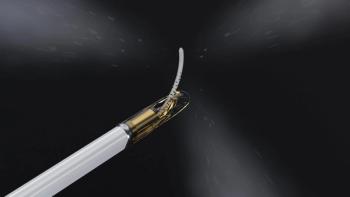
Breast Ultrasound: More Invasive Cancers, More False Positives
Ultrasound detects more invasive cancers, but number of total cancers detected is comparable between US and mammography.
Ultrasound and mammography are comparable in detecting breast cancer, according to a study published in the
Researchers from the United States and Argentina sought to determine the comparability of ultrasound and mammography characteristics in breast cancer screening. A total of 2,662 participants in the U.S., Canada, and Argentina completed three annual breast cancer screenings, which were included in this study.
There were 7,473 examinations in total: 4,351 with US and film-screen and 3,122 digital mammography. All had biopsy or 12-month follow-up. According to the authors, 129 US screens and 127 mammograms were required to detect one cancer.
“For 4814 incidence screens (years 2 and 3), US had higher recall and biopsy rates and lower [positive predictive value] PPV of biopsy (PPV3) than mammography,” the authors wrote. “The recall rate was 10.7 percent (n = 515) vs 9.4 percent (n = 453, P = .03), the biopsy rate was 5.5 percent (n = 266) vs 2.0 percent (n = 97, P < .001), and PPV3 was 11.7 percent (31/266) vs 38.1 percent (37/97, P < .001).”[[{"type":"media","view_mode":"media_crop","fid":"44693","attributes":{"alt":"ultrasound","class":"media-image media-image-right","id":"media_crop_5070241902786","media_crop_h":"0","media_crop_image_style":"-1","media_crop_instance":"5030","media_crop_rotate":"0","media_crop_scale_h":"0","media_crop_scale_w":"0","media_crop_w":"0","media_crop_x":"0","media_crop_y":"0","style":"height: 114px; width: 170px; border-width: 0px; border-style: solid; margin: 1px; float: right;","title":"©Bork/Shutterstock.com","typeof":"foaf:Image"}}]]
The authors concluded that while cancer detection rate was comparable with the two techniques, US detected a greater proportion of invasive and node-negative cancers but also provided more false positives.
Newsletter
Stay at the forefront of radiology with the Diagnostic Imaging newsletter, delivering the latest news, clinical insights, and imaging advancements for today’s radiologists.



























